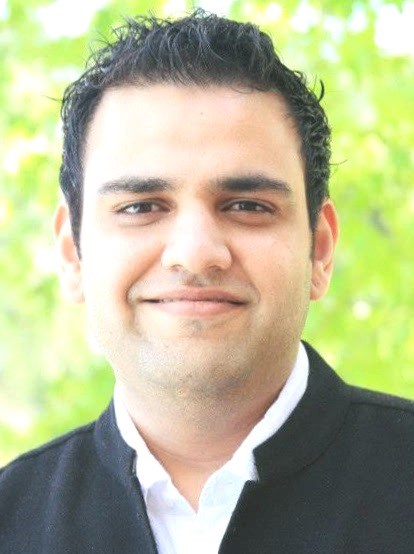Medical Physics Seminar – Monday, April 9, 2018
Dosimetric Characterization of a Directional Low - Dose Rate Brachytherapy Planar Source Array

Manik Aima (student of Dr. Wesley Culberson)
Research Assistant, Department of Medical Physics, UW-School of Medicine & Public Health, Madison, WI - USA
A novel commercial directional low-dose rate (LDR) brachytherapy source called the CivaSheetTM has been developed by CivaTech Oncology Inc. (Durham, NC). The CivaSheet is a planar array consisting of discrete directional 103Pd elements called the CivaDots. A gold shield is present in each CivaDot and imparts directionality to the radiation output of the device. Since the source geometry and design are considerably different than conventional LDR sources, a thorough investigation was required to ascertain the dosimetric characteristics of the device prior to its clinical implementation. The primary aim of this work was to establish a source strength framework for the device as well as investigate the dosimetric characteristics of a CivaDot and the CivaSheet. Existing dosimetric formalisms were adapted to accommodate a directional source, and other distinguishing characteristics including the presence of gold shield x-ray fluorescence were addressed in this work. The University of Wisconsin Variable-Aperture Free-Air Chamber was used to perform primary air-kerma strength measurements of a CivaDot. The source energy spectrum and anisotropy were investigated to realize air-kerma strength as well as a Monte Carlo (MC) model of the source was simulated using MCNP6 code. The feasibility of transferring the measurement to a well-type ionization chamber was also assessed. The work assisted in the establishment of a CivaDot primary source strength standard in collaboration with NIST using the Wide-Angle Free-Air Chamber. The dosimetric characteristics of a CivaDot were investigated using in-phantom TLD micro-cube and GafchromicTM EBT3 film measurements as well as MC simulations. Analogous TG-43 dosimetric parameters for the CivaDot were determined using the measurements and MC methods. Finally, the CivaSheet dose distribution was investigated using an EBT3 film stack phantom. The measured dose distribution was compared to MC predicted dose distribution, and the validity of CivaDot dose superposition was also assessed.
Direct Measurement of the Energy Spectrum of a 6MV Linear Accelerator

Sameer Taneja (student of Dr. Larry DeWerd)
Research Assistant, Department of Medical Physics, UW-School of Medicine & Public Health, Madison, WI - USA
External beam radiotherapy performed with linear accelerators uses the convolution-superposition algorithm to calculate dose in a patient. This algorithm relies on knowledge of the primary energy spectrum of a linear accelerator, which is determined using Monte Carlo methods and fine tuned during commissioning by unfolding data from measured percent depth dose curves. Though clinically practical, this method is indirect and insensitive to small spectral variations. The most accurate form of spectral determination is through direct measurement using a pulse mode detector, which has previously been unsuccessful due to the high-fluence, high-energy nature of linear accelerator photon beams. This work optimized spectrometry techniques to measure the energy spectrum of a 6 MV Varian Clinac 21EX linear accelerator using a high purity germanium spectrometer. Measured spectra were compared with results from Monte Carlo simulations using transport code MNCP6 and an experimentally validated linear accelerator model.